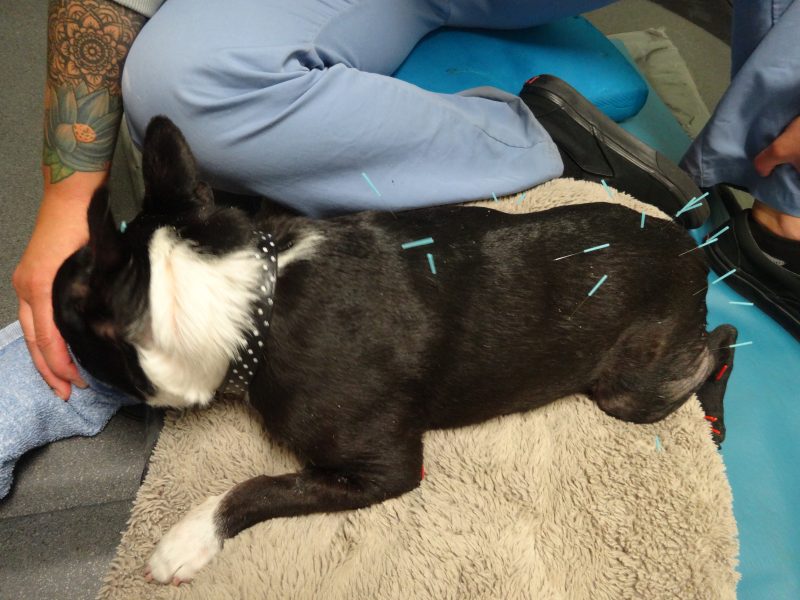Beyond the Social Media Curtain
by Cathryn Adolph, LVT, CCRP
A behind the scenes look at rehabilitation
Modern day social media and rehabilitation fit together better than any other specialty of veterinary medicine. Colorful equipment, aquatic therapies, and our unique patients fill our feeds with vivid imagery. It is wonderful way to spread the word that physical rehabilitation is available, but it paints only a partial picture of what rehabilitation is.
The Stars
The pets most featured in videos are the extremes. Those obese cats trucking through the underwater treadmill or swimming, a paralyzed dog learning to walk again, and a pet enjoying life in prosthetics. We cannot leave the athletes out either as they are often seen performing wonderful feats of strength and coordination. These images are dramatic and flashy!
The reality is that most of our patients don’t fit into the examples above. They are seniors who need some strength training to help get up in the morning, pets with progressive diseases that rehabilitation can help manage, young dogs with congenital deformities, and the most common injury, a torn CCL.
Comparison
During public outreach events, I have overheard people say things like my dog is not as bad as “those dogs they see on Facebook,” so they don’t need rehabilitation. Another misconception I hear often is my pet could never do rehabilitation after seeing a young agility dog doing strength training.
While not every dog needs rehabilitation in their life, basing your decision on the extremes shown on social media can be misleading. A severely arthritic pet should not be expected to perform the same fancy strength training routines as the afore mentioned athlete. Nor should a chronic, mild lameness not seek help because the pet isn’t missing a limb. Each pet is an individual, their journey to recovery will be different than others, and comparison is sometimes just not fair.
 The Work
The Work
The most common video I see in social media is the before and after. A few images of the pet on day one, maybe a few seconds of part of the pet’s rehabilitation, and a beautiful ending.
Though I feel rehabilitation is amazing and does amazing things for so many pets, it is not a magic wand. There is work and time, in the form of homework asked of our clients and their pets. It can take weeks to put on muscle mass, gain strength, and re-educate muscles.
The Tools
The underwater treadmills, pools, and colorful instability equipment get all the hype. While the other modalities, such as ultrasound, therapeutic laser, massage, and more, are just as important as the flashy modalities. However, they are not as exciting, so they are only occasionally shared with pictures.
The Team
Behind every successful case seen on social media, there is a team working together. A patient’s team, as it basic core, is the pet, owners, and rehabilitation team. Depending on the case, a team may also include veterinary prosthetists, pet wheel chair manufactures, and more. All members of the team work together to support the patient and their families with their goals.
Social Media
With veterinary rehabilitation being a newer option for pets, social media is a fantastic tool to spread the word that it is even an option. However, we do have to take time to realize, there is a lot of more behind the imagery presented to us. When these amazing videos of transformation cross your feed, take time to wonder about the story behind the video, it was probably an amazing journey to achieve the successful conclusion.
